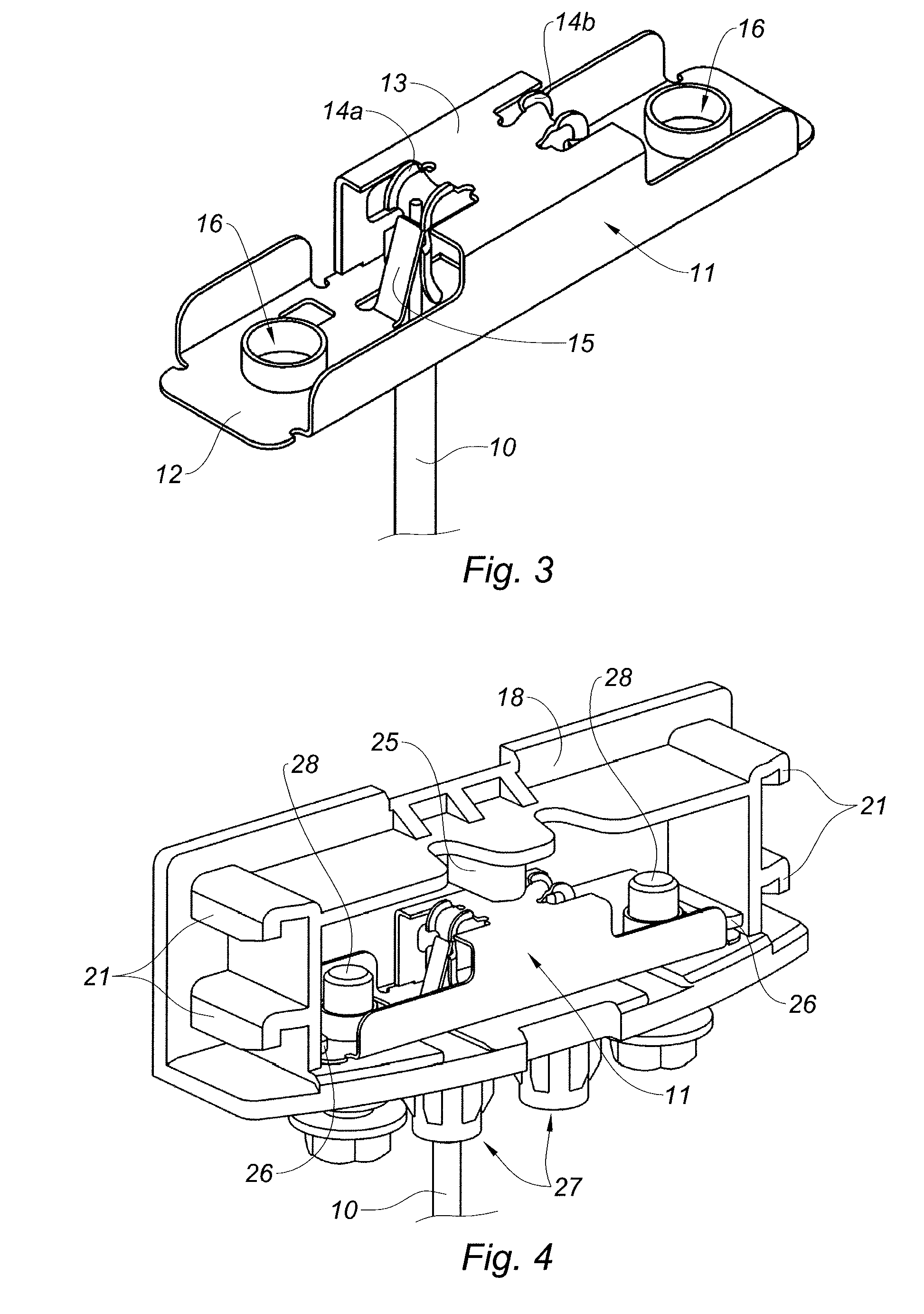Hydrant
a technology of water supply and water pipe, applied in the field of water supply, can solve the problems of not being able to meet the needs of water distribution pipes,
- Summary
- Abstract
- Description
- Claims
- Application Information
AI Technical Summary
Benefits of technology
Problems solved by technology
Method used
Image
Examples
Embodiment Construction
[0055]FIGS. 1 to 4 represent a hydrant 2 intended to be located at ground level so as to allow access, using a suitable key, to the operating member of a valve of a buried pipe, such as a water distribution pipe.
[0056]The hydrant 2 includes a metal body 3, preferably made of cast-iron, having a generally tubular shape. The body 3 comprises a tubular part 4, a base 5 formed by a lower peripheral flange extending radially from the lower edge of the tubular part 4, and an upper peripheral flange 6 extending radially from the upper edge of the tubular part 4 . The upper peripheral flange 6 is intended to receive a closing buffer (not shown in the figures) and to be located at the level of the roadway. The tubular part 4 is intended for the passage of an actuating key of the operating member of the corresponding valve.
[0057]The body 3 comprises longitudinal wings 7 intended to rotationally immobilize the body 3 in cooperation with the ground. The longitudinal wings 7 are regularly distri...
PUM
 Login to View More
Login to View More Abstract
Description
Claims
Application Information
 Login to View More
Login to View More - R&D
- Intellectual Property
- Life Sciences
- Materials
- Tech Scout
- Unparalleled Data Quality
- Higher Quality Content
- 60% Fewer Hallucinations
Browse by: Latest US Patents, China's latest patents, Technical Efficacy Thesaurus, Application Domain, Technology Topic, Popular Technical Reports.
© 2025 PatSnap. All rights reserved.Legal|Privacy policy|Modern Slavery Act Transparency Statement|Sitemap|About US| Contact US: help@patsnap.com



